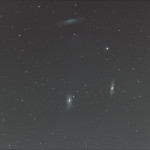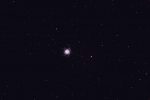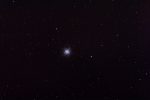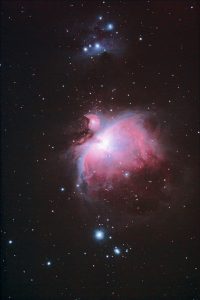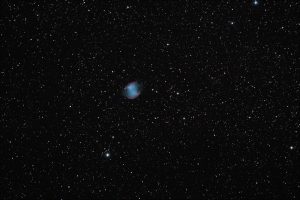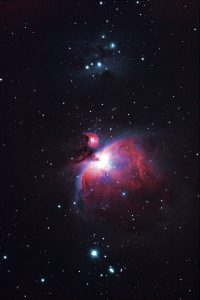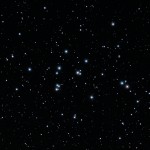
M44, a long time coming but worth the wait.
Messier 44, The Beehive Cluster, Praesepe. This is one really large object. It is 95 arc minutes (a bit more than 1.5 degrees) in angular size. It’s big enough that it won’t fit in a single frame on my Canon 300D with my f/5 Schmidt-Newtonian scope. That officially makes M44’s dimensions Big by Large! Located about 545 light years from home, M44 is a relatively close open cluster of stars and one of the closest stellar objects. It is large enough and bright enough that in a relatively dark sky it is easily discernible with the naked eye and is spectacular through binoculars.
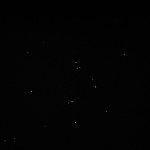
My first image of a DSO from May 2006
Personally I have a warm fuzzy spot for M44. Many years ago when I first started picking up astronomy magazines I looked through the charts, read the articles and saw that Saturn was traversing M44 which made it very easy to find in suburban skies. It was the first deep sky object I looked at through my department store telescope and I was instantly hooked. It was also the first image I took of a DSO with my point-and-shoot digital camera clamped to my eyepiece in the same department store telescope. Now, years later, I finally snapped another image of an old favorite.
